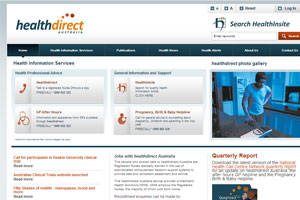A WEST Australian study has cast fresh doubt over the ability of telephone consultation and triage lines to reduce demand in emergency departments.
Researchers found 52.4% of patients who attended Royal Perth Hospital’s ED after contacting the healthdirect Australia phone helpline did so even after being advised not to, according to the research published in the latest MJA. (1)
The researchers also compared the number of attendees who made their own decision to go to the ED against those who were advised to by healthdirect and found both groups were equally likely to get it right.
healthdirect referrals and self-referrals were assessed as similar in “appropriateness” at 72.9% and 73.8% respectively, according to the researchers, while GP referrals scored the highest level of appropriateness at 89.7%.
The findings have raised questions over whether healthdirect represents a good use of scarce health funding.
“It is not clear that, if offered an informed choice, the community would choose to pay for telephone advice that makes little difference to their behaviour over other health service priorities”, said an accompanying editorial published in the same issue of the MJA. (2)
Dr Sheilagh Cronin, Rural Doctors Association of Australia (RDAA) president, told MJA InSight that more scrutiny of the cost versus the outcome of healthdirect was now needed.
“We do question its cost-effectiveness and it’s ironic that the doctors manning lines are earning more money than those getting out of bed to see patients”, she said.
In January, RDAA calculated that taxpayers were paying $1000 for each person told by healthdirect not to attend an ED. (3)
This was more expensive than providing face-to-face after-hours services at a rural hospital ED, according to the RDAA media release.
The MJA study findings also cast doubt over claims late last year by federal Health Minister Tanya Plibersek that healthdirect had cut demand on EDs and after-hours clinics. (4)
According to Ms Plibersek, more than 20 000 people who called the healthdirect GP after-hours helpline in its first 6 months of operation were redirected from seeking urgent after-hours treatment at either hospital EDs or GP after-hours services, equating to a 44% reduction in the requirement for face-to-face medical consultations out of hours.
However, Professor Yusuf Nagree, professor of emergency medicine at the University of WA, and coauthors wrote earlier this year in Emergency Medicine Australasia that there was little evidence to support these claims. (5)
Access block, not low acuity patients, was the key driver of ED overcrowding, staff stress, patient distress and increased mortality and morbidity, they wrote.
Professor Nagree told MJA InSight that a comprehensive analysis of healthdirect that looked at all aspects of the helpline — including a cost‒benefit analysis — was now needed.
“I think we all need to be clear that if we are going to spend this money, it has to be additional money, not health budgets redistributed”, Professor Nagree said.
A spokesperson for Ms Plibersek told MJA InSight that healthdirect was a service that had “proven to be overwhelmingly popular”.
“Since its inception the service has received over 3.3 million calls and the number of calls has been steadily increasing year on year”, the spokesperson said.
“We welcome studies looking at the effectiveness of services such as the helpline but it is disappointing that conclusions have been drawn from the study when data collection ceased in April 2009, which was before the after-hours GP helpline was established”, the spokesperson said. The telephone triage service was extended in 2011 to include the GP service.
“The [MJA] authors seem to believe that the sole purpose of healthdirect Australia and the after-hours GP helpline is to divert people from emergency departments. This is not the case — these services exist to ensure that callers get the right advice, support and services when and where they need it.
“Some people will be referred to an ED but others will be able to stay at home after receiving advice from a GP.”
– Amanda Bryan
1. MJA 2012; 197: 498-502
2. MJA 2012; 197: 482-483
3. Rural Doctors Association of Australia; Media release: 12 January 2012
4. Tanya Plibersek, Minister for Health; Media release: 30 December 2011
5. Emergency Medicine Australasia 2012; 24: 123-126
Posted 5 November 2012

 more_vert
more_vert